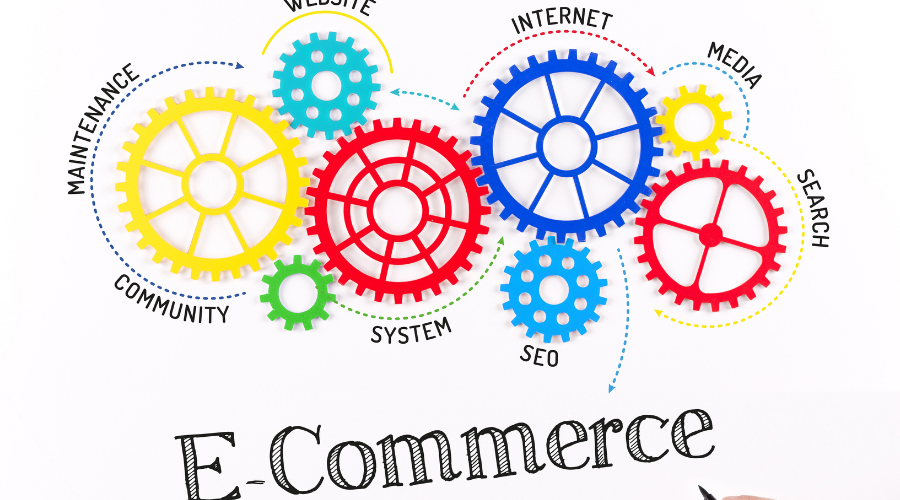Introduction
Objective: to state the importance of choosing an appropriable e-commerce platform.
Overview: outline in a few lines the platforms to be compared, which include Shopify, WooCommerce, BigCommerce, Magento, Wix E-commerce, and Squarespace.
Relevance: the relevance in which each one caters to different business needs and business sizes.
- Shopify
Background and Key Features
Introduction to Shopify, including its ease of usability and being regarded as one of the best e-commerce shopping cart solutions.
Pros: a user-friendly interface with a huge app store. It has a payment gateway integrated into it. Now, the remaining two, i.e. mobile optimization and very tight and secure operations.
Very easy onboarding process with a very intuitive user interface for beginners.
Good customer support with community resources available.
Thousands of customizable templates to get started.
Native integration across several sales channels such as social media and Amazon.
Cons
Transaction fees unless using Shopify Payments
Limited customization without using code
More expensive for advanced features and larger businesses
Best Suited for
Small to Medium-Sized Businesses looking for ease of use and quick setup. - WooCommerce
Overview and Key Features
Introduce WooCommerce as a WordPress plugin to handle e-commerce.
Key features of this e-commerce plugin include full customization, huge plugin ecosystem, open-source platform, and flexibility within the product management domain. Listed below are the pros and cons:
Pros
Free to use with WordPress—no transaction fees.
Highly customizable and scalable by making available access to thousands of plugins
Strong SEO capabilities with WordPress
Total control over hosting and data
Cons
Requires more technical knowledge and ongoing maintenance
Additional costs for premium themes, plugins, and hosting
No dedicated customer support; solely reliant on community forums
Best Suited For
WordPress Users Interested in features and having technical knowledge, looking for flexibility in customization. - BigCommerce
Overview and Key Features
Describe BigCommerce as it is: scalable ecommerce.
Key features: No transaction fees, solid SEO, multichannel selling, enterprise-grade features. Pros: No transaction fees even with third-party payment gateways, very few third-party apps needed, solid SEO performance and fast page loads, based on advanced solution for business growth. Cons: Slightly steeper learning curve for beginners.
Not as many free themes as Shopify offers
Costs can quickly rise when purchasing premium themes or access to more advanced features
Best Suited for
Business Looking to Scale and need a platform with advanced, built-in functionalities - Magento
Overview and Key Features
Intro to Magento as an enterprise-level e-commerce platform
Key features: Open source, extensive customization, high performance and security, multi-store.
Pros
Highly Customizable and Scalable for Big Businesses
Multi-store, language, and currency support
Advanced SEO and great security.
Large community support as well as third-party extensions.
Cons
Setup as well as ongoing maintenance demands high level of technical knowledge
Development, hosting as well as continuous maintenance are all costly
Too big and unwieldy for small businesses
Best Suited for
Complex Large Agencies that have complex needs and require a very customizable solution that scales well. - Wix eCommerce
Overview and Key Features
A bit of an intro to Wix eCommerce being a platform that’s friendly for beginners.
Key features: Drag-and-drop builder, customizable templates, built-in SEO tools, and all-in-one hosting solution .
Pros
Very user-friendly with drag-and-drop facilities.
Pricing is very affordable and flexible for small business owners.
Includes hosting and domain registration.
Suitable for simple shops that need to maintain a straightforwardly beautiful look.
Cons
Lack of scalability and fewer advanced options.
Can’t be as flexible with customization due to being closed-environment software .
Transaction fees with lower tier plans.
Best Suited For
Newcomers and Small Business owners who want a user-friendly, integrated, platform. - Squarespace
Overview and Key Features
Present Squarespace as a design-driven ecommerce platform.
The key features are beautiful templates, the built-in and integrated blogging platform, built-in analytics, and simplicity. Pros: Beautifully designed, professionally looking templates; intuitive drag-and-drop functionality; optimal for content-heavy sites because of the built-in blogging tools; great customer support combined with great documentation. Cons: Limited options for customizations and third-party integrations; less suitable for large, complex stories; an increased cost on advanced e-commerce features. Best Suited for Creative Businesses with Focus on Design that want to have an online store where appearance is most important and has inbuilt content features.
Conclusion
Summary: Sum up the types of platforms.
Final Verdict: Assist to make a decision on a proper platform based on their business size, technical capabilities, and other unique requirements.
Call to Action: Kindly let the readers go in detail regarding their business needs and, if possible, engage free trials or demos of these platforms before they make the final call.
